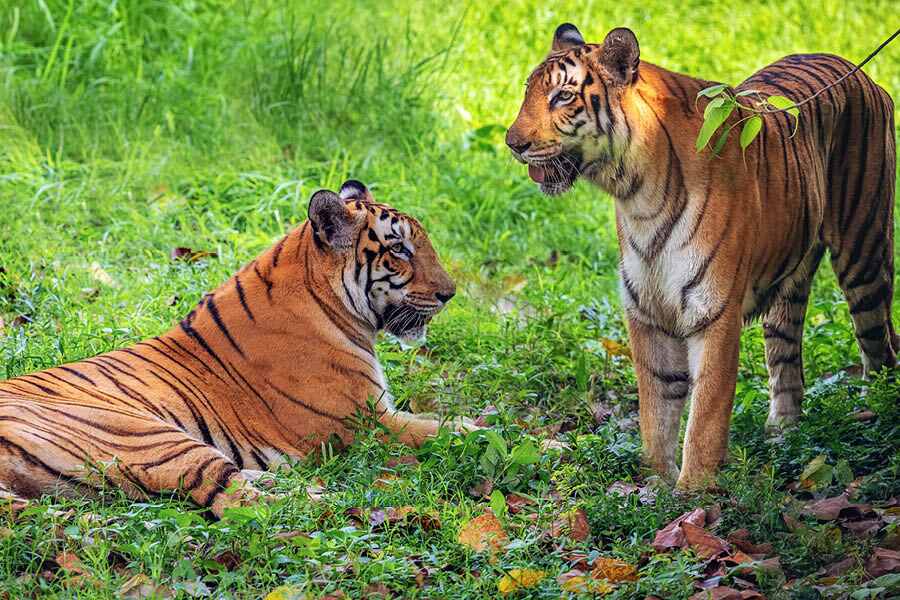The tiger’s charm in the wild is nothing short of mesmerising. Its strength, beauty and mysterious nature attract adventurers from all over the world to different sanctuaries in India. But, as we hope to see this amazing animal, we must remember that we are guests in their world. Every rustle in the bushes, every click of the camera and every footprint can affect their delicate environment. Today, on International Tiger Day, let's learn to be responsible wildlife travellers, respecting not just the tiger, but the entire canvas of their existence.
From brink to boom

An adult male and his subadult cubs at a waterhole in Bandhavgarh National Park, Madhya Pradesh iStock
As per reports in the National Tiger Conservation Authority, India boasts 75% of the global tiger population across 55 tiger reserves. Madhya Pradesh, home to six famous tiger reserves, has more than 50% of the tiger population in India. According to the last Tiger Census, the population of this majestic species had increased to 3,167 from 2,967 in 2018, with the count touching 3,682 as of March 2024. However, these numbers have only increased in the recent past, with 2006 recording the lowest count of 1,411 tigers.
Focussed efforts from state governments, the National Tiger Conservation Authority (NTCA) and various wildlife forums have helped protect this majestic animal. Project Tiger and the Wildlife Protection Act — India’s key initiatives for saving tigers — have been crucial in safeguarding these magnificent animals. By creating tiger reserves and imposing strict anti-poaching laws, they’ve breathed new life into dwindling tiger populations, giving hope to a species once on the brink of extinction.
While India has witnessed hope with increasing tiger numbers, the big cat family still remains vulnerable, and the battle is far from won. Wildlife conservationists face continuous challenges in preserving the tiger and its natural surroundings.
Challenges faced
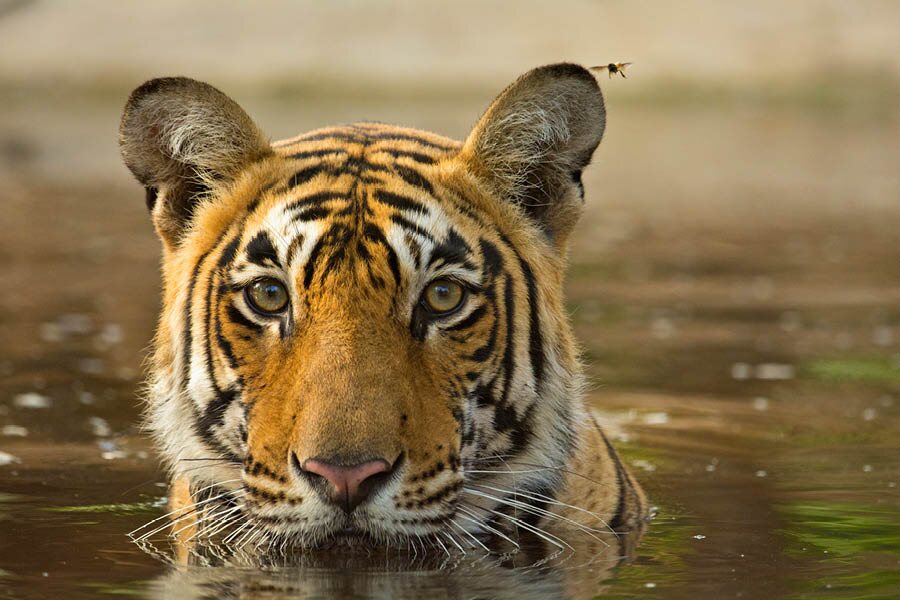
Wild tiger in a pool of water in Ranthambore Tiger Reserve iStock
Protecting tigers within sanctuaries is a formidable challenge. Their natural habitat is shrinking due to deforestation, encroachment and climate change — and this remains a constant battle. Moreover, the intricate balance of the ecosystem, where tigers occupy the apex predator position, is disrupted by poaching, which targets both tigers and their prey species. Poaching, fuelled by the insatiable demand for tiger parts in the black market, continues to cast a long shadow over these animals. Dhritiman Baroowa, founder, White Winged Journeys, added that poaching has reduced considerably. However, during lean periods, when the number of tourists is lower, there are more cases of poaching.
Sadhvi and Harshvardhan, trained naturalists and lodge managers at Bandhavgarh Jungle Lodge, said, “The tiger population within the reserves is increasing and they need more space to mark their territories. Unfortunately, we have lost many of the historical tiger corridors due to deforestation and development. As a result there is a lack of space for these predators, which ultimately results in conflicts and decline in their numbers. The way forward is to have more awareness about sustainable ways of development.”
“Human-wildlife conflict, caused by the growing proximity of human settlements to protected areas, is another significant threat. There is habitat loss due to the ever-increasing population in India. However, villagers are more than happy to relocate and give back the land to the animals if adequately employed,” said Bhavna Menon, an independent conservationist and freelance writer. Also, inadequate resources within the forest department can hinder conservation efforts. “People can contribute funds to NGOs for the wellbeing of the frontline staff, like forest guards, as they are the real heroes apart from the local communities,” Bhavna added.
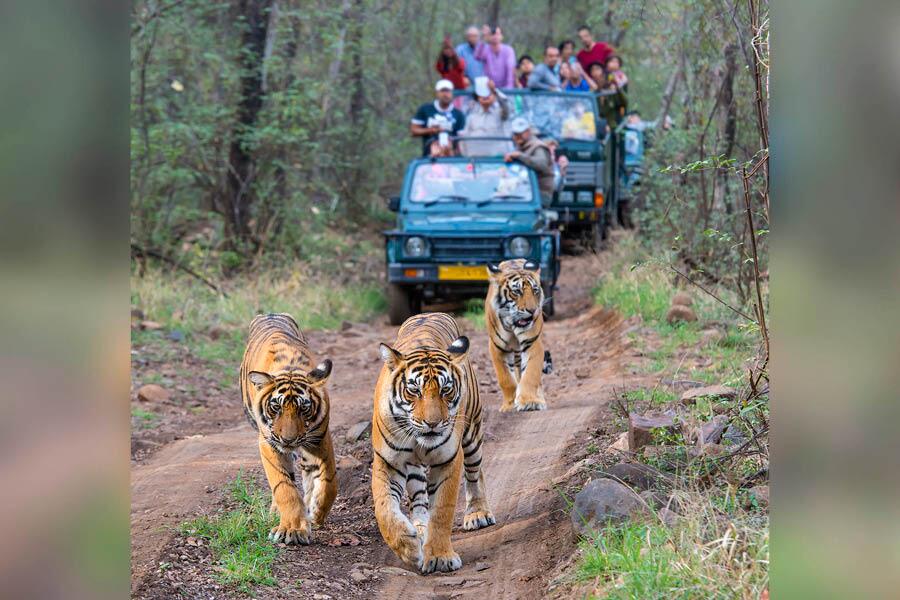
A tigress with her juvenile cubs being followed by tourists iStock
“Tourism can unintentionally have an adverse impact on wildlife. Their presence might disrupt the delicate ecosystem. Increased footfall can stress animals and alter their behaviour, especially on designated trails. Though it might seem minor, littering can harm wildlife and pollute their habitat. Trying to click Insta-worthy photos can also lead to disturbances, especially when photographers use flash or get too close,” added Dhritiman.
Despite these obstacles, dedicated forest officials, wildlife experts and local communities work tirelessly to safeguard these creatures, often risking their own lives.
Dos and don’ts while on a tiger safari

A tiger in Corbett Tiger Reserve on the banks of the Ramganga river Shutterstock
The government and wildlife authorities are working hard to protect tigers and other endangered species. But, as responsible travellers, we too have a role to play. Every thoughtful action helps preserve these magnificent creatures and their delicate habitats. Let’s be mindful tourists, ensuring that our footprints in the wild leave only memories, not scars. Here are some tips for being a responsible traveller while enjoying the excitement of a tiger safari:
Choose your tour operator wisely: Opt for tour operators who are committed to sustainability and wildlife conservation. Reputable operators adhere to strict guidelines and ensure minimal human impact on the environment.
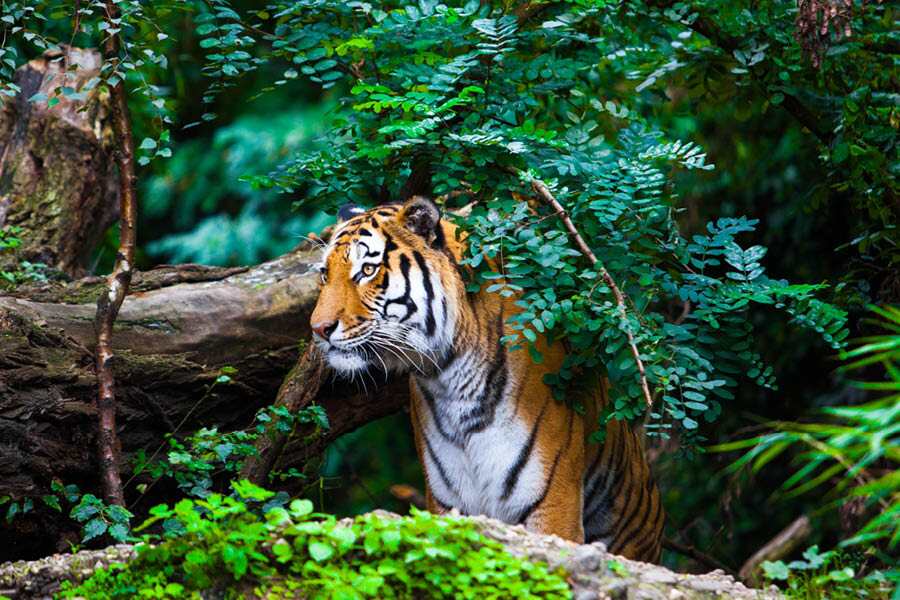
As you venture into their realm, ensure your presence leaves no trace Shutterstock
Respect wildlife boundaries: Never get too close to wildlife, including tigers. Maintain a safe distance and use binoculars or cameras with long lenses to observe animals without disturbing them.
Minimise noise pollution: Loud noises can stress wildlife. Avoid shouting, honking or playing loud music. Stick to designated trails and follow your guide's instructions.
Leave no trace: Pack all your trash and dispose of it properly. Avoid littering, as it can harm animals and pollute the environment.
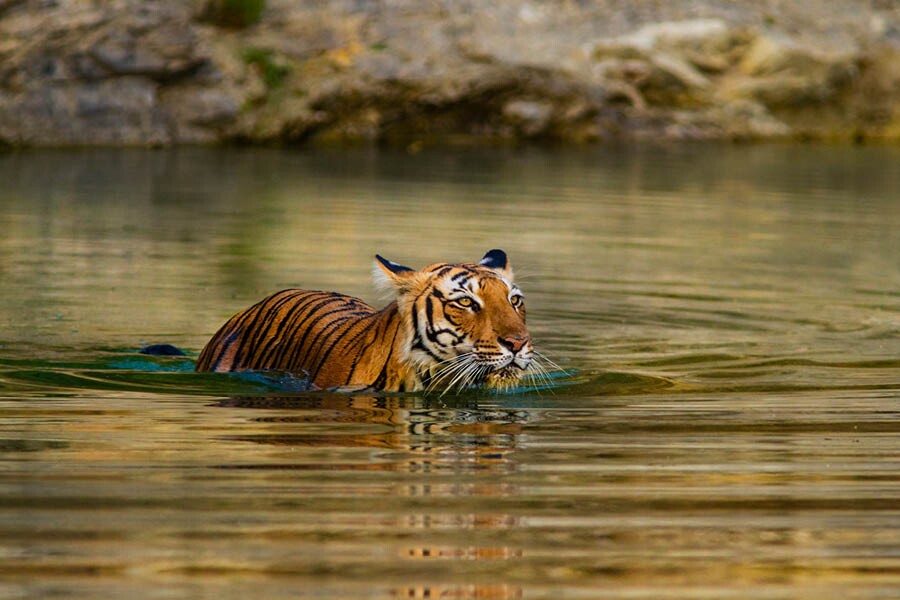
A Bengal tiger Shutterstock
Support local communities: Select accommodations and restaurants that support local communities and contribute to conservation efforts. This helps create sustainable livelihoods and reduce dependence on forest resources. Bhavna said, “Working with indigenous communities and providing employment can help in the overall conservation of national parks.”
Be mindful of your carbon footprint
Opt for eco-friendly transportation whenever possible. Consider offsetting your carbon emissions to minimise impact on the environment.
Beyond the safari
“While tiger sightings are undoubtedly the highlight of any safari, there’s much more to explore in these protected areas. You can always immerse yourself in the local culture, NGOs, visit surrounding villages and learn about the conservation efforts,” said Bhavna.
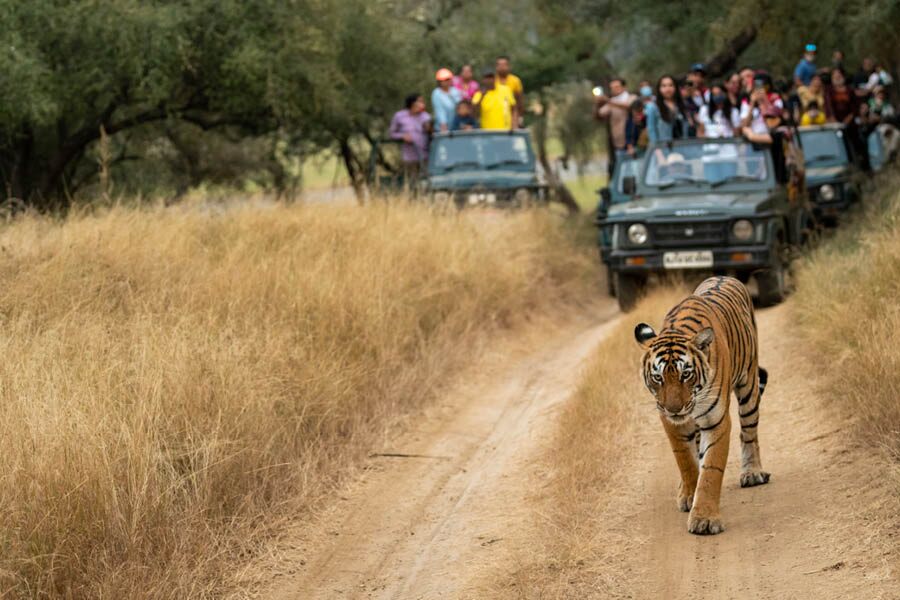
A female Bengal tiger with tourists in the background inside a Tiger Reserve in Rajasthan Shutterstock
Educate tourists
“It is imperative for tourists to know about the workings of the forests before going on a safari. They should be taught about ethical wildlife watching and essentially maintaining the decorum of the forest”, echoed Dhritiman. “Having a proper orientation of guests at their lodges or even at the reserve gate could be a possible solution,” Bhavna said.
The king of the jungle deserves our respect. As you venture into their realm, ensure your presence leaves no trace. By making thoughtful choices, respecting boundaries and supporting local communities, you ensure that future generations also get to see tigers in their natural environment. Be an ambassador for conservation, preserving not just their stripes but the very essence of the jungle.
